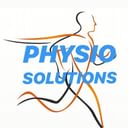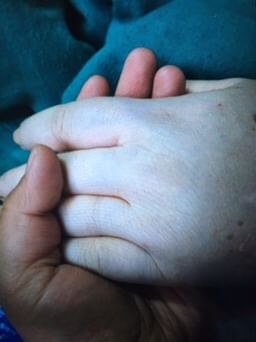Role Of Physiotherapy In Geriatric!
Geriatric physiotherapy covers a wide area of problems concerning the elderly. There are many conditions that affect people as they grow older and include but are not limited to the following: arthritis, osteoporosis, cancer, alzheimer's disease, hip and joint replacement, balance disorders, incontinence, etc. Physiotherapists play a key role in enabling older people to use a number of the body's systems fully to enhance mobility and independence. Sadly, in some situations, neither improvements nor even maintenance of functional mobility can't be achieved. In those particular cases, physiotherapists can make a difference by helping older people to be comfortable and pain-free.
Geriatric physiotherapy became a specialty of physical therapy study in 1989. Since then, physiotherapists have worked to understand the problems of the aging. The types of problems faced in geriatric physiotherapy are grouped into three different categories. One category is the problems that happen because the patient simply does not use their limbs or does not exercise. These problems can be addressed by reconditioning through range-of-motion exercises and other exercises.
Another category deals with is cardiovascular disease, respiratory conditions and stroke. The physiotherapy professional has an array of tools at its disposal to work with these conditions. Exercise therapy, electro therapy, and more can be used.
The third category is skeletal problems. Geriatric physiotherapy helps people who have these disorders, such as osteoporosis which makes patients frailer, and osteoarthritis very painful these problems require special attention. Along with that, geriatric physiotherapy is responsible for preventing many falls because of work with balance and gait. Some clinics focus entirely on balance issues for the elderly.
Geriatric physical therapy is a proven means for older adults to improve mobility and balance, build strength, boost confidence in their physical abilities, and nonetheless, remain active over years. However, some of the work of geriatric physiotherapy is not aimed at returning patients to their earlier states of health. The most important goals are to be able to function at their best abilities. Doing everyday tasks and living an unconfined life are valuable assets.
Another role of geriatric physiotherapy is to help with rehabilitation after knee or hip replacement surgeries. People who have these operations are likely to walk differently. It affects their abilities to do daily chores and their quality of life.
Some people turn to physiotherapy as a form of treatment after an accident, or in relation to other conditions. Others are referred to physiotherapy clinics by their doctors for specific problems. Still, others end up in geriatric physiotherapy care in hospitals or nursing homes after accidents or illnesses. All of these people get great benefits, contributing to their physical abilities and helping to maintain their independence for longer periods of time.
With increased age, patients often face many physical and emotional changes that can affect the level of function and well-being. Rehabilitation maintains functional independence among the elderly. Rehabilitation of geriatric patients is imperative for the patients' well-being and for society. Depression is common in the older population if a functional loss of mobility and an inability to perform activities of daily living (ADLs) predominates. Cognitive impairment, such as delirium and dementia, can affect the patient's rehabilitation goals and outcomes.
Muscle strengthening activities and exercise to enhance balance and prevent falls should also be done two to three times a week. Based on the scientific evidence available, these recommendations are thought to improve cardiorespiratory and muscular fitness, bone and functional health, and to reduce the risk of noncommunicable diseases, depression and cognitive decline.
The nature and quantity of exercises seem to differ depending on the principal outcome measure, walking three times a week for at least six to twelve months can lead to great benefits in executive functions performance and structural and functional brain improvements.
According to many researchers, aerobic exercise, at least at a moderate intensity level, is necessary (often sufficient) to obtain gains in cognitive and cerebral health, but others argue that resistance training at least two times a week can promote cognitive and functional brain plasticity in older adults. One-year moderate-intensity aerobic exercise program three days/week significantly improved spatial memory in adults aged 55-80 years.
Everyone knows that exercise is good for health but does not practice at the recommended level for health.
The ultimate aims of geriatric rehabilitation are the same as in any other field of medicine- the restoration of independence and the maximum possible restoration of physical and mental functions. I think the most important step is to get the patient out of bed at the earliest possible moment the illness permits; bed is a dangerous instrument and has more side-effects than the most potent medicines yet it is still prescribed and used casually, and in the case of the older patient is that much more dangerous" rest in bed is anatomical, physically and psychologically unsound. Look at the patient lying in bed, what a pathetic picture he makes, the blood clotting in his veins, the lime draining from his bones, the scybalous blocking his colon, the flesh rotting from his seat, the urine leaking from his distended bladder, and the spirit evaporating from his soul" most people who have not experienced working in geriatrics think it must be boring but it is not; they think there is no future in it, but there is, for it is so rewarding and a great challenge to send an old person back to his or her place in society. Physiotherapy for geriatric patients is much the same as physiotherapy for any other patient, only it is taken at a slower tempo and it requires constant repetition. After the older patient has been acutely ill he may suffer from confusion, brain damage, or anemia resulting in disorientation and lack of comprehension, lack of confidence, fear of falling or walking or lack of energy. His hemoglobin level may be low, and the drugs which cured his acute illness may have side-effects such as diarrhea or dizziness. The lack of the will to live is probably the most difficult to overcome.
We can't stop time. Or can we? the right type and amount of physical activity can help stave off many age-related health problems. Physiotherapists, who are movement experts, prescribe physical activity that can help you overcome pain, gain and maintain movement, and preserve your independence often helping you avoid the need for surgery or long-term use of prescription drugs.
Things I as a physiotherapist want you to know:
- chronic pain doesn't have to be the boss of you.
- you can get stronger when you're older.
- you may not need surgery or drugs for low back pain.
- you can lower your risk of diabetes with exercise.
- exercise can help you avoid falls and keep your independence
- your bones want you to exercise.
- your heart wants you to exercise.
- your brain wants you to exercise.
- you don't" just have to live with" bladder leakage.



+1.svg)
